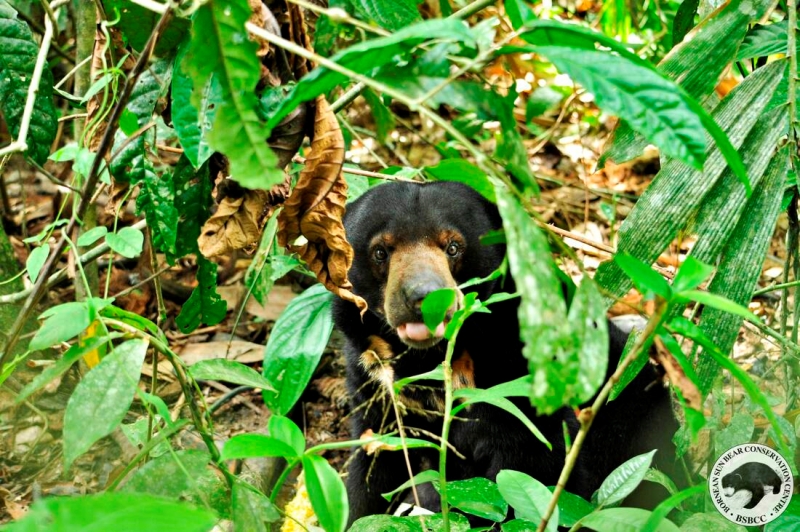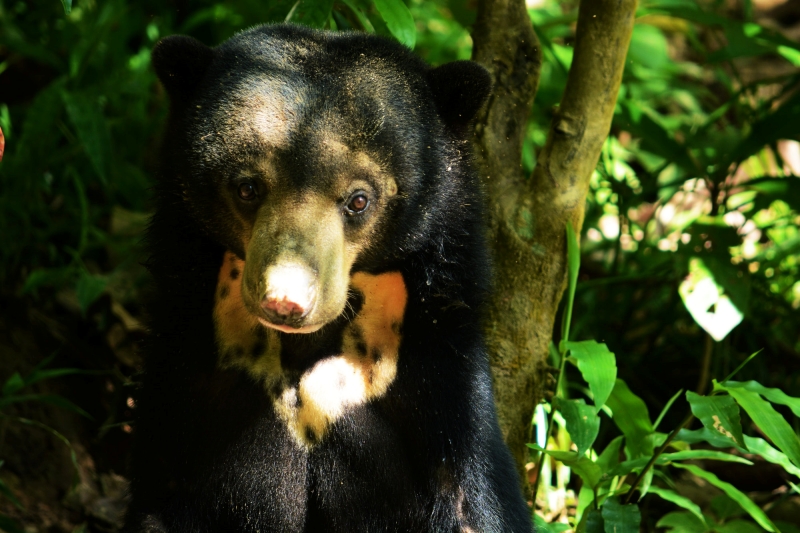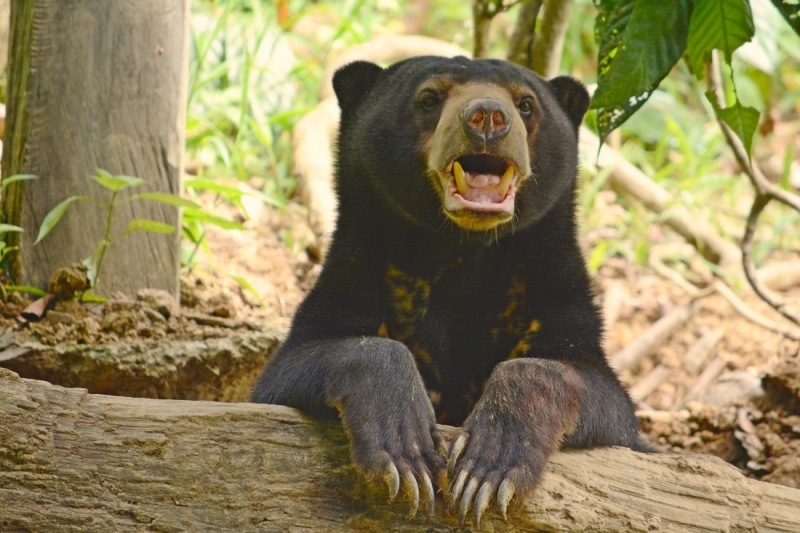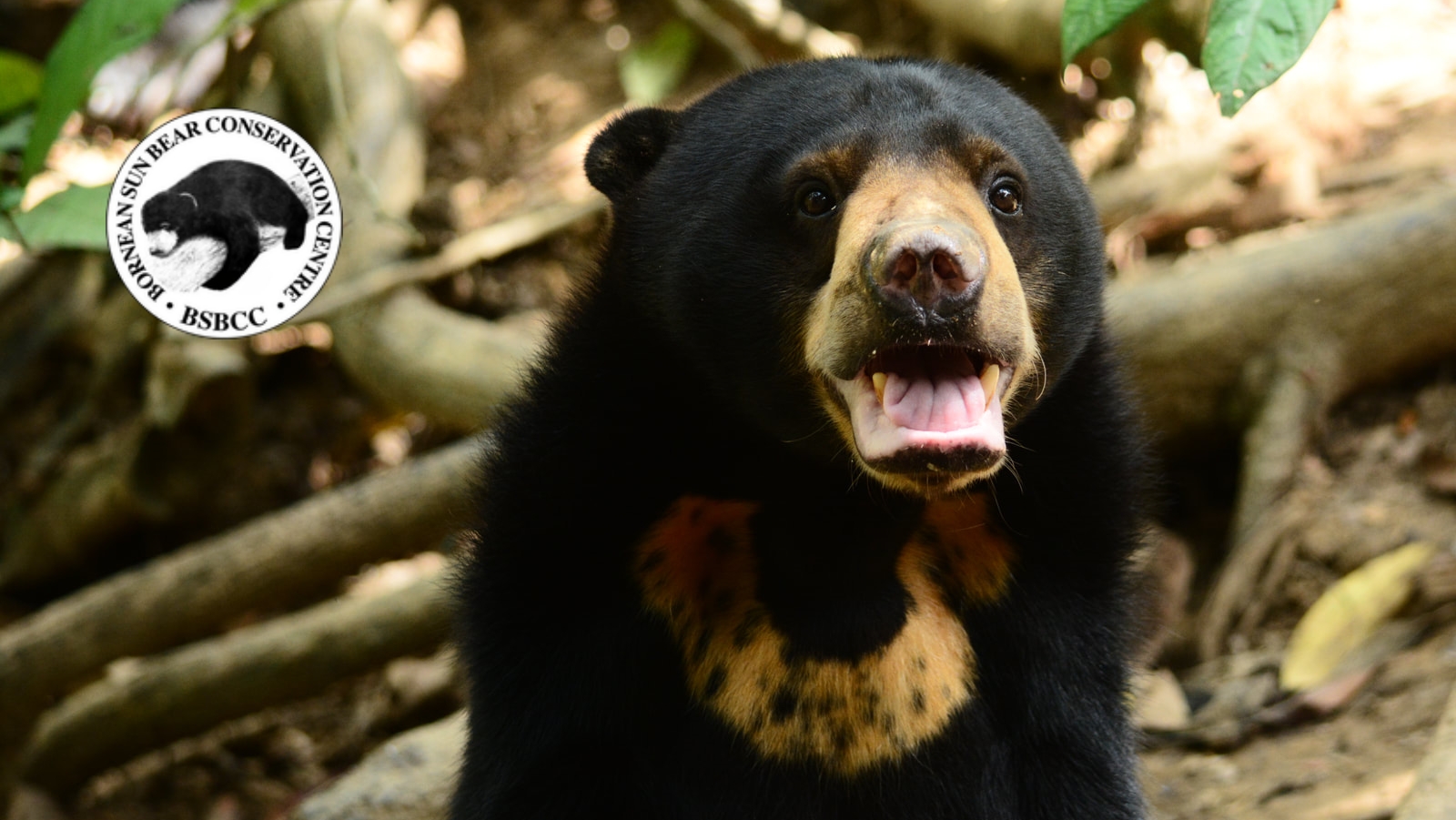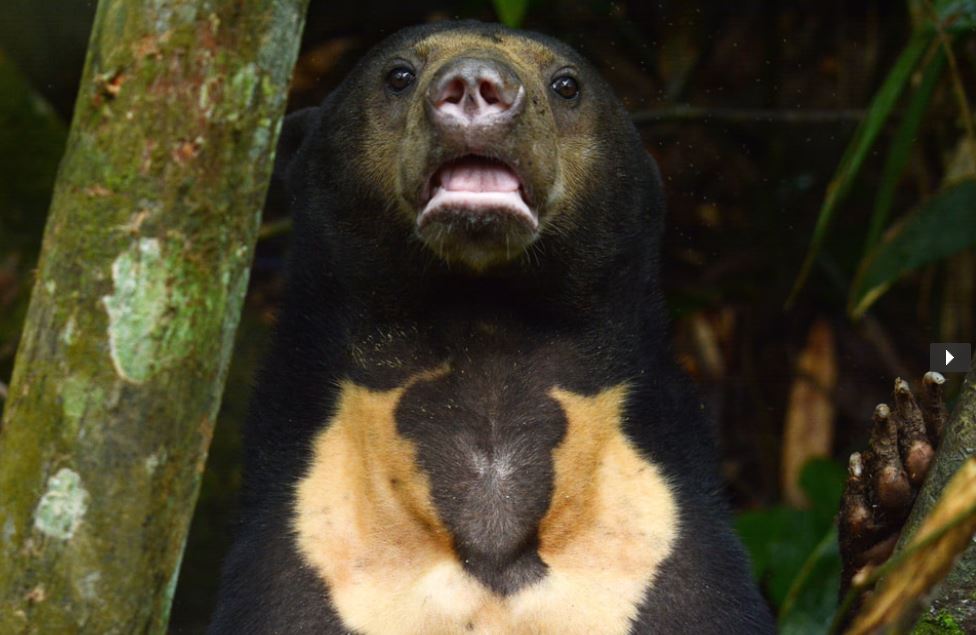
Fundraising target: £2,100 +
Funds donated: £5,000
Project: the purchase of a satellite tracking collar for a sun bear to wear when released back into the wild. This is one of 21 projects nominated for our 21 For 21 programme.
21 For 21 Project Partner: The Bornean Sun Bear Conservation Centre (BSBCC)
The Bornean Sun Bear Conservation Centre (BSBCC) is a sun bear rescue and rehabilitation facility being developed in Sabah, Malaysian Borneo. Its mission is to promote sun bear conservation in Borneo through animal welfare, conservation, rehabilitation, education and research
Find out more about BSBCC. Set up a 21 For 21 Fundraising Page.
About the Bornean Sun Bear Conservation Centre
The centre’s aims include:
- Creating the capacity to confiscate, rehabilitate and release suitable orphaned and ex-captive bears back into the wild.
- Providing an improved long-term living environment for captive bears that cannot be released.
- Educating the public and raising awareness about this species.
- Achieving increased protection for sun bears and their habitat through ongoing research, increased knowledge and awareness, and further protection of habitat.
Sun Bears
The sun bear is the smallest, most arboreal and least studied bear. It is the second rarest bear species, after the giant panda.
Their name comes from the pale horseshoe shape on their chests, which is said to resemble the setting or rising sun. No two markings are the same.
They have a very long tongue at 20 – 25cm. This helps them extract honey from bee hives, earning them the alternative name ‘honey bear’ or ‘beruang madu’ in Malay and Indonesian.
Sun bears live in tropical lowland forests and are the only bear in South-East Asia. They are mainly diurnal and do not hibernate but build nests in trees to sleep in. They are omnivores and primarily eat invertebrates, fruit and honey.
Threats to Sun Bears
The total sun bear population has declined by at least 30% in the last 30 years contributing to sun bears being classified as ‘vulnerable’ in 2007 meaning they are at high risk of extinction in the wild (IUCN 2007). Sun bears face three main threats:
Habitat loss – Like many species, deforestation and degradation of habitat has dramatically decreased their numbers. The main causes in Borneo are plantation development, unsustainable or illegal logging and human-caused fires. In Sumatra and Borneo, large-scale conversion of forest to oil palm or other cash crops is proceeding at a rate of 1,000s of km² per year (Holmes 2002).
Commercial hunting – Sun bears are primarily hunted for their gall bladders (for use in Chinese folk medicine) and bear paws (as an expensive delicacy). In China and Vietnam, bile is milked from bears while they are still alive. Bears are routinely restocked as they do not live long. Killing sun bears is illegal in all of their native counties but is largely uncontrolled.
Pet trade – Sun bears are the smallest bear in the world. As such, their cubs are considered incredibly cute and there is a high demand for them as pets. The mother is killed and the orphaned cub is removed from the wild and commonly kept in small cages with inadequate care.
21 For 21 funding will provide for a satellite tracking collar for a rehabilitated sun bear to wear when it is released back into the wild.
Visit Borneo through our responsible travel network.
Images courtesy of BSBCC
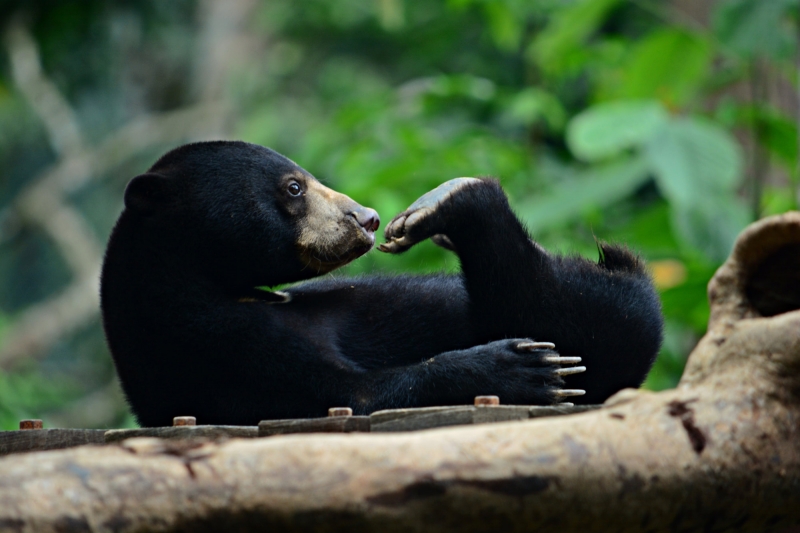

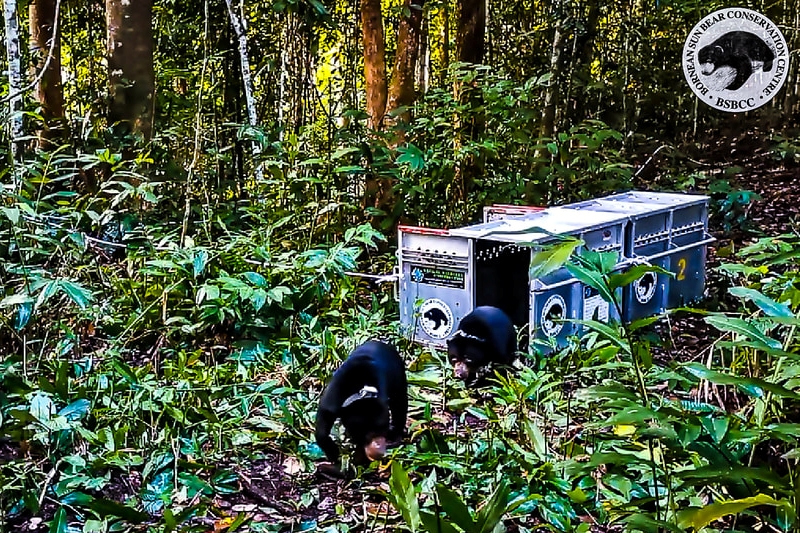
All funds raised during 2021 will contribute to the 21 For 21 Project Fund so please do sign up for a sponsored challenge (details here), support our creative initiatives, or make a donation if you are able to.
Every Pound makes a difference. Thank you.
